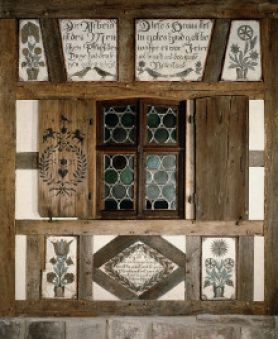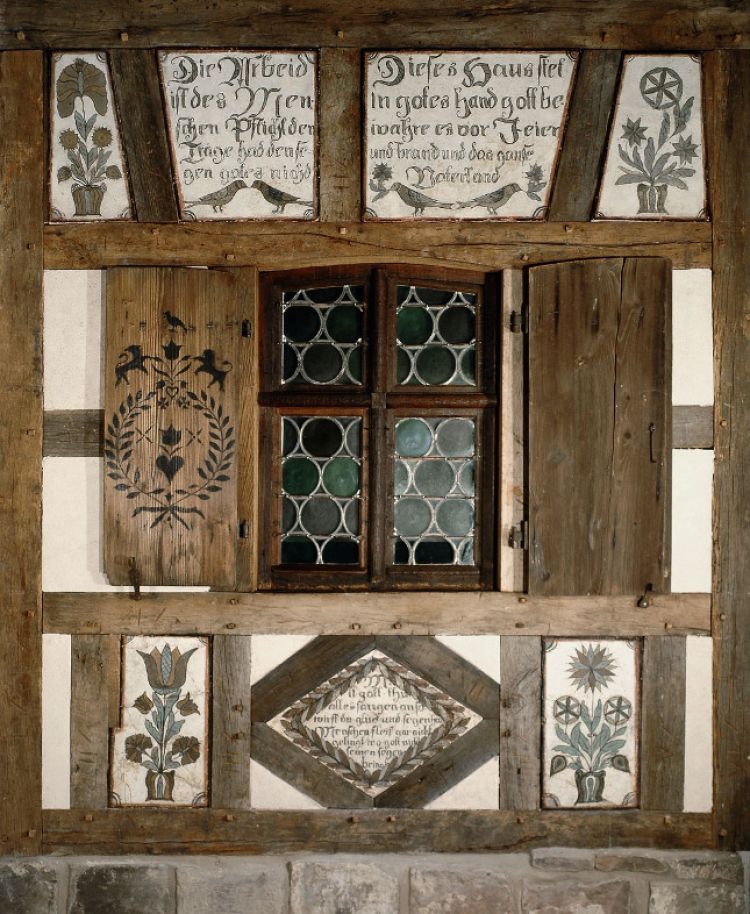Wall of an Alsatian house

Built on a Vosges red sandstone substructure, the traditional house on the Alsatian plain is made with a half-timbered wooden frame. The beams are horizontal, vertical or oblique and fastened with wooden pegs. Cob, a mixture of mud, water and chopped straw, is daubed on to the wooden lathing in the panels located between the beams. When applied in this way, materials found in the region make excellent insulation.
Some houses cover up the cob with painted decoration. This often includes the characteristic patterns of Alsatian folk art, a couple of birds representing the householders, bunches of flowers (tulips, carnations ...) symbolising the prosperity wished for by the household.
The inscriptions reveal the main concerns of the farmers: to protect their house from fire by placing it under divine protection and encourage everyone to do his share of the work, since the house is also a farm. It is not uncommon to detect in these maxims a touch of caustic humour, for example: "Ich Aff steh da und gaff, wenn ich da steh kan ich wieder gehn" ("Here I stand, gaping at this wall like a poor idiot, when I might just as well go on my way").
